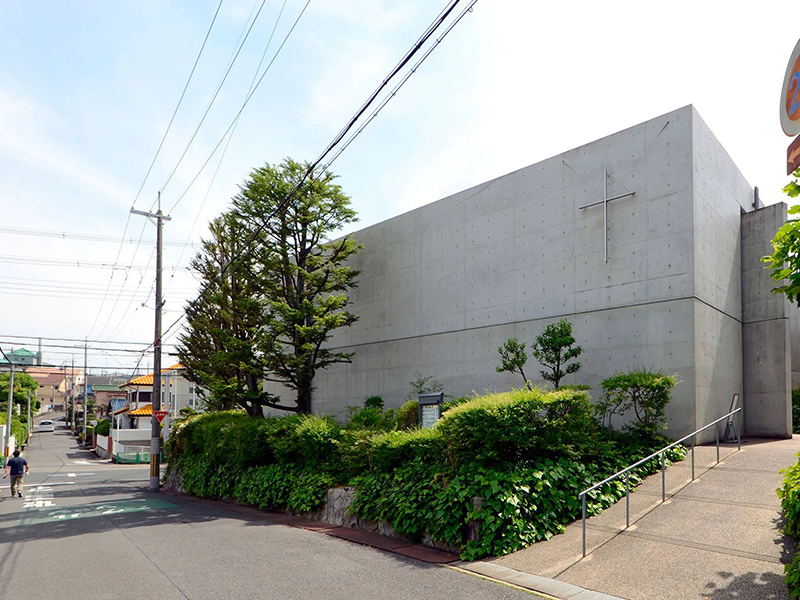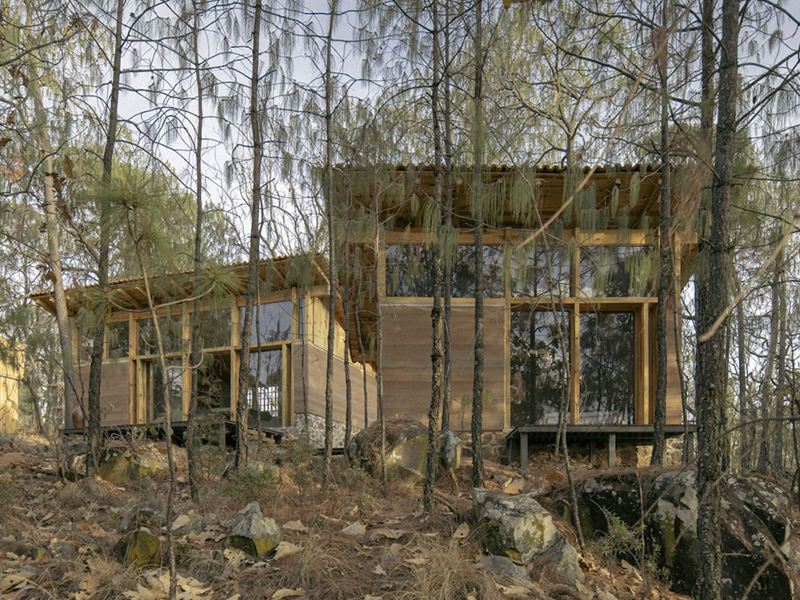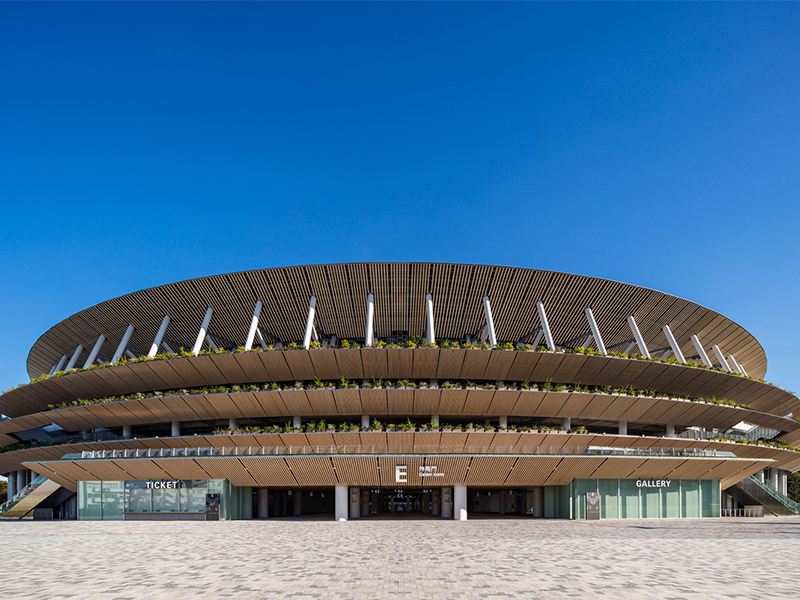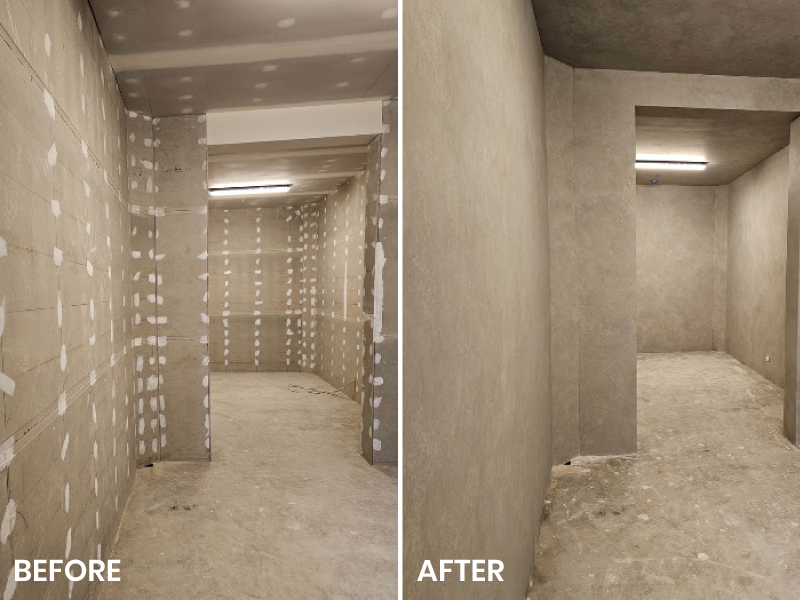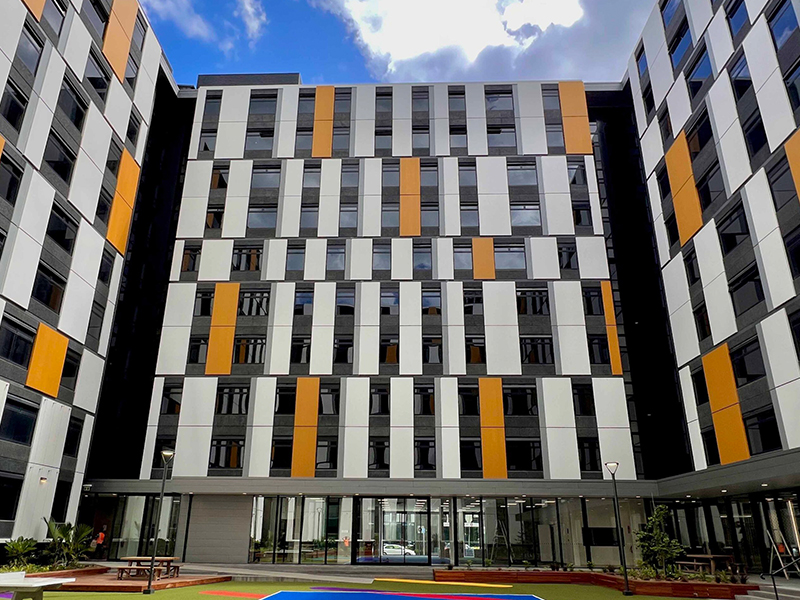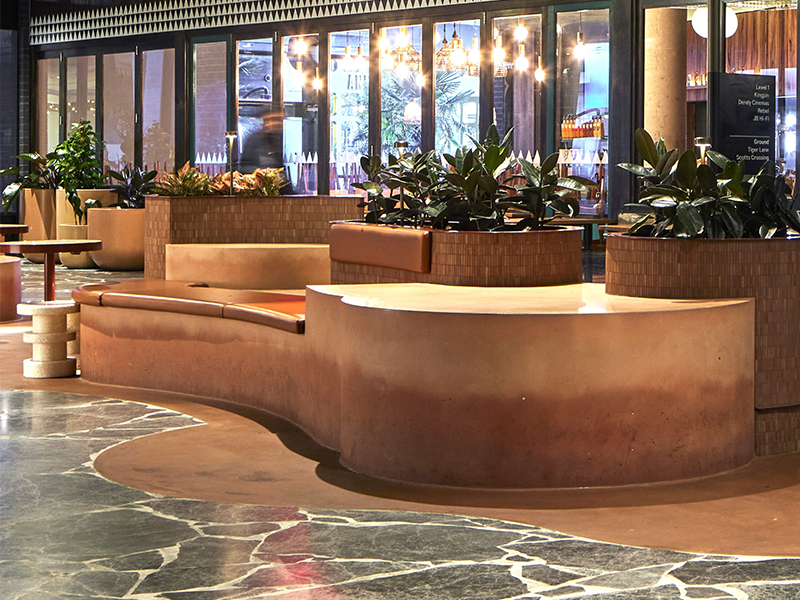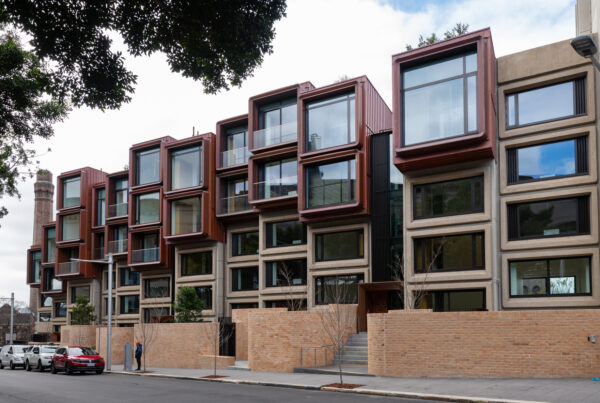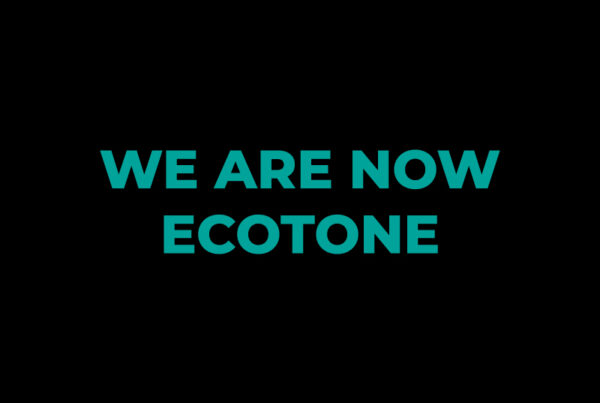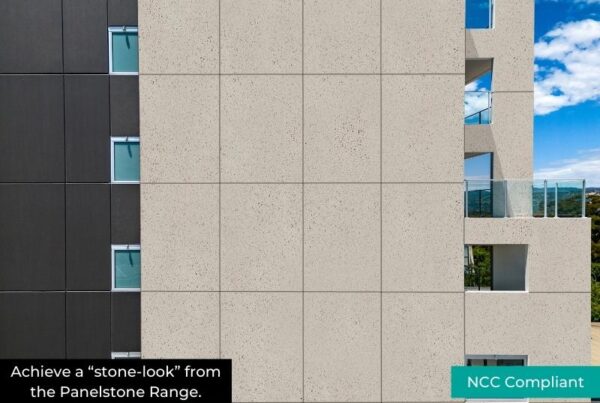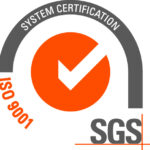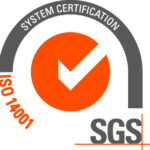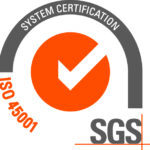In a time when architectural narratives span raw minimalism to textural maximalism, the conversation around internal finishes is evolving. They’re no longer an afterthought—they speak to a building’s soul.
For architects and design consultants striving to unify exterior and interior design, finishes must ground design intent with durability, sustainability, and a tactile experience. And more than ever, high-end surfaces like Venetian plaster walls, concrete or microcement finishes, rammed earth interiors, and corten and timber finishes are emerging as tools to communicate the identity of a space.
Let’s explore how today’s architects are leveraging texture, tone, and material expression to create unforgettable interiors, and how the future of these finishes is shifting.
From Exterior to Interior
Modern architecture often draws its strength from materials. When a building’s facade showcases bold or raw finishes like Venetian plaster walls, concrete, rammed earth, and corten steel or timber, there’s an increasing desire to bring those same materials inside. This visual and tactile consistency enhances spatial flow and reinforces architectural intent.
In particular, monolithic architecture thrives on this approach. Inspired by geology and permanence, it uses continuous surfaces to carve out sculptural forms. By extending these surfaces indoors, architects foster a sense of immersion.
One standout example is Gottfried Böhm’s Bensberg Town Hall in Germany. Built in the 1960s, it is a powerful work of brutalist architecture, with exposed concrete flowing from exterior walls into interior spaces without pause. Böhm used the material as a way to speak honestly through mass and texture.
Similarly, Louis Kahn’s Salk Institute in California reveals how concrete can act as both structure and atmosphere. The continuity of finish from outside to inside helps generate a meditative calm that defines the building’s identity. Concrete here is the experience.
The Rise of Venetian Plaster
There’s a renewed appreciation for traditional, hand-applied finishes, especially those with richness, movement, and craftsmanship. Venetian plastering has re-emerged in modern architecture, admired for its luminous depth and tactile elegance.
What once adorned Italian palazzos now finishes the interiors of boutique hotels, restaurants, and refined residences across the globe. Smooth and responsive to light, Venetian plaster walls offer an expressive alternative to flat paint, adding subtle drama without overwhelming a space.
Raw Yet Refined: Concrete and Microcement
Across contemporary architecture, the appeal of monolithic surfaces is growing stronger. Both concrete and microcement offer architects a way to design seamless, tactile environments where materiality speaks louder than ornament.
Concrete is long celebrated in brutalist and minimalist architecture which brings structure and atmosphere. In Tadao Ando’s Church of the Light, exposed concrete shapes light and silence with poetic restraint. There’s no ornament—just form, void, and texture. Inside, the raw finish becomes a meditative canvas, elevated through precision.
- Tadao Ando’s Church of the Light
*image credit to Archeyes.com
On the other hand, microcement provides a finer-grained, continuous finish with the flexibility to wrap around walls, floors, ceilings, and custom joinery. Originally used for industrial floors, microcement is now embraced in high-end interiors for its ability to deliver a seamless, joint-free appearance—perfect for minimalist bathrooms, kitchens, retail spaces, and galleries.
Weathered Character: Corten Finishes
While concrete and microcement speak to smoothness and flow, corten steel introduces ruggedness and age.
With its distinctive rust-toned patina, corten brings a sense of permanence and warmth to both exterior and interior spaces. Buildings like the Jean Nouvel’s Musée du Quai Branly demonstrate how corten introduces warmth and depth in both exterior and interior settings.
- Jean Nouvel’s Musée du Quai Branly
*image credit to Archiobjects.org
From Earth to Interior: Rammed Earth’s Quiet Return
Rammed earth, once seen as niche or rural is being rediscovered in high-end architecture. With its layered appearance and natural tones, it connects buildings to place and climate. It speaks to sustainability, permanence, and craftsmanship.
One standout example is Peter Zumthor’s Bruder Klaus Field Chapel in Germany. The walls, formed by pouring layers of rammed concrete and burning out the timber formwork, create a powerful tactile interior grounded in ritual and raw material expression.
In Mexico, Taller de Arquitectura X also uses raw earth and stone to reconnect homes with the ground they sit on, embracing regionally sourced materials that age naturally over time.
- Taller de Arquitectura X
*image credit to Archdaily.com
Timber and Tone: Warmth from Within
Timber is one of architecture’s most enduring interior materials. It softens space, offers natural warmth, and adds human scale. It’s used to great effect by architects like Kengo Kuma, whose layered timber structures diffuse light and blur interior with exterior.
At the Japan National Stadium, designed by Kuma for the Tokyo 2020 Olympics, timber sourced from all 47 Japanese prefectures was used extensively from cladding beams, ceilings, and terraces, to celebrate both tradition and locality. The material’s warmth is balanced by the precision of its joinery, creating an interior that feels both expansive and intimate.
- Kuma’s Japan National Stadium
*image credit to Archdaily.com
Global Influence, Local Execution
Across the globe, material-led architecture is shaping how we experience space. These projects share a philosophy: that materials are more than finishes, they’re central to meaning. But bringing those same materials into real-world construction projects, within tight budgets, or under compressed timelines can be challenging.
The ECOTONE Alternative: High-End Finishes Without the Trade-Off
Architects are often faced with a trade-off: pursue the raw, expressive materials that define great architecture or choose more practical options that simplify delivery.
For Venetian plaster: While the aesthetic remains timeless, the practicalities of using traditional lime plasters can be labour-intensive, fragile, and high-maintenance, especially in commercial or high-traffic interiors.
For Concrete or microcement: Concrete brings an incredible atmosphere but can crack over time and demands exacting placement. Microcement offers a seamless finish, but achieving a high-quality result requires expert application and careful substrate preparation which often comes at a premium cost.
For rammed earth: Beautiful and sustainable but rammed earth remains difficult to specify in Australia. It demands specialist knowledge, structural support, and often comes with high costs and long timelines.
For corten finishes: Using corten materials indoors brings complications. Corten stains and continues to oxidise. Neither is easy to repair or maintain over time.
For timber: In commercial interiors, it presents practical limitations; It’s prone to movement, UV fading, and surface wear. Maintenance becomes a long-term consideration, particularly when consistency and performance are required over time.
ECOTONE eliminates that trade-off.
We offer an alternative that makes high-end internal finishes achievable; economically, sustainably, and with less complexity. Whether you’re designing interiors with strong material character or looking to create continuity from facade to fitout, our systems allow you to do both. Our long-life colour coatings transform standard construction materials like blockwork, precast, render, or fibre cement into surfaces that look and feel like Venetian plaster, concrete, microcement, rammed earth, corten steel, or timber.
Instead of wrestling with material limitations, you can design with flexibility.
Our systems:
- Allow substrates to breathe, reducing degradation over time
- Are low-VOC, supporting healthier indoor environments
- Offer durability and colour stability, even in demanding interiors
- Reduce installation and long-term maintenance costs
We’ve helped architects and consultants across Australia and New Zealand realise these finishes in real-world projects:
- The Brewery Stage 2 (Sydney): A hand-applied ECOTONE Matt finish was used on fibre cement internal walling and plasterboard ceilings to achieve a refined concrete look. The result is a cohesive, monolithic interior that supports the creative character of the space while complementing the building’s heritage.
- Carlaw Park Student Village (Auckland): Multiple ECOTONE finishes were applied to precast concrete elements, including a corten-look metallic, bold yellow, and black-and-white tones. The solution offered the architectural intent of corten without the long-term staining issues. It was also delivered through prefabricated panels that reduced onsite time and cost while meeting aesthetic and durability requirements.
- Wagga Wagga Agriculture Institute (NSW): We created a custom corten-look finish for compressed fibre cement cladding using an application of ECOTONE Matt and ECOTONE Sharp. The coating was applied both externally and internally to the entrance, allowing the interior wall to carry the same weathered steel aesthetic as the facade. This ensured a cohesive material language throughout, while avoiding the cost, lead time, and maintenance issues typically associated with real corten.
- Canberra Centre S84 Arcade: Internal concrete elements, including custom furniture, were coated in a custom-coloured mineral finish to reflect a rammed-earth aesthetic. The addition of ECOTONE’s Clean and Protect Shield made the custom furniture in the food court easy to clean and provided enhanced durability, not to mention graffiti resistance, which is ideal for high-traffic commercial interiors.
- The Brewery
- Carlaw Park
- Wagga Wagga Agriculture Institute
- Canberra Centre S84 Arcade
It’s how we help architects bring the exterior in—not just visually, but with integrity.
Ready to explore finishes that match your design intent? Let’s work together through a CXD session where we sample, test, and refine until the surface says exactly what it needs to.


